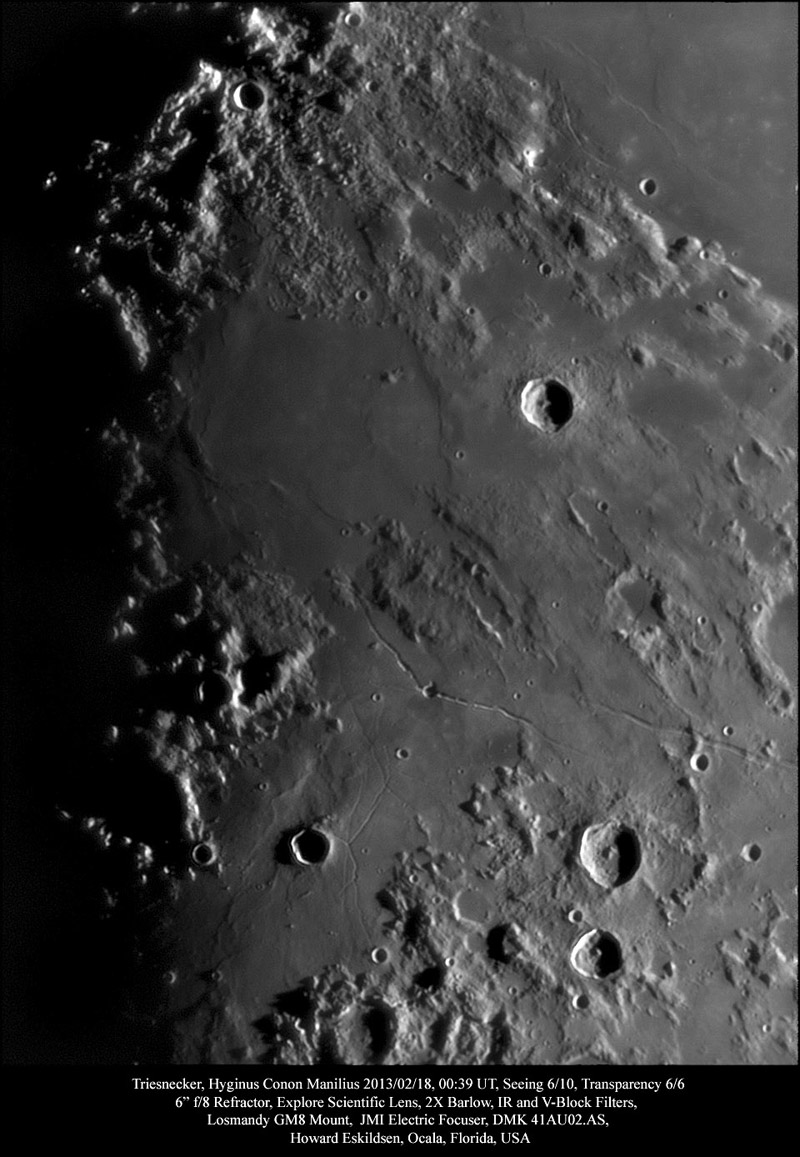January 27, 2023
Reading the Troughs
Originally published March 5, 2013

image by Howard Eskildsen, Ocala, Florida
In most images I look for sharpness of features to see what they tell about geologic processes. The first thing I noticed with Howard's fine view is the gentle undulations of the terrain. This doesn't feel like a flat landscape with painted on hills and holes. Near the top the tongues of Imbrium ejecta are obviously higher-standing than the low spaces between that are flooded with mare lavas. The parallel ridges of the Haemus Mountains are like a school of whales just rising above the waterline. North of Hyginus a layer of distal ejecta rises up as a plateau cut by a gaping mouth opening up into Vaporum. That broad trough containing the Hyginus W basin crater chain is like the troughs in the Apennines further north. And notice the plateau on the southwest side of the northmost extent of the Hyginus Rille - that seems to be the same distal ejecta as north of the rille. The rille occupies another broad trough that has subsided and filled with lava. Finally, notice the graben or trough just west of Triesnecker, and the parallel broad ridge just beyond the trough. This image demonstrates again that every image brings a new perspective to understanding even familiar parts of the Moon.
Chuck Wood
Related Links
Rükl plate 34
21st Century Atlas chart 12.
Yesterday's LPOD: Colorful Privolva
Tomorrow's LPOD: Homeward Bound
COMMENTS?
Register, Log in, and join in the comments.



